Photo
Unsure if you know but when i enquired about this car last year sometime i was told owner got sick of it and parted it out. Sad days.
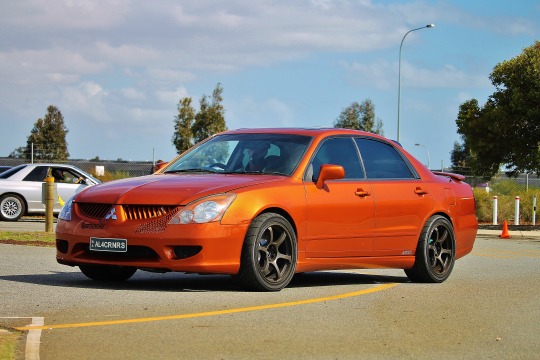




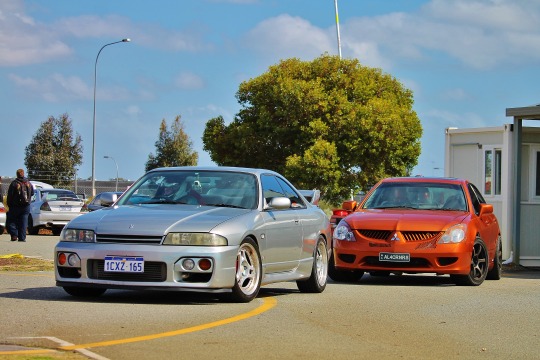
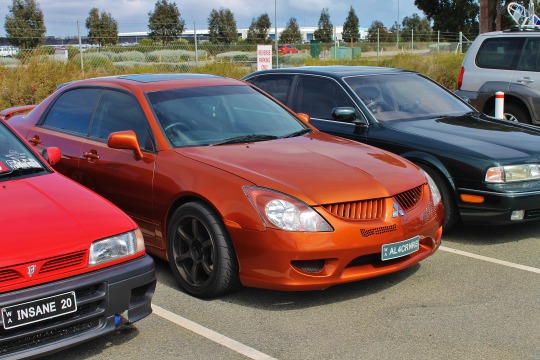
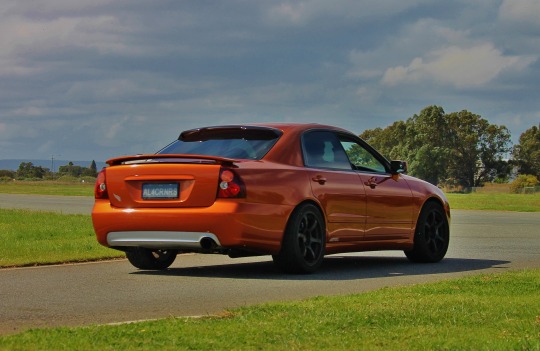
This car is interesting. A TL Mitsubishi Magna VRX AWD that has had a lot of development work done to it and competes in Time Attack Challenges. Current power from the 3.5L NA 6G74 V6 is 325HP @ the wheels. So when you take into account the loss through the AWD drivetrain it has about twice the 213HP at the engine of the standard car.
49 notes
·
View notes
Text
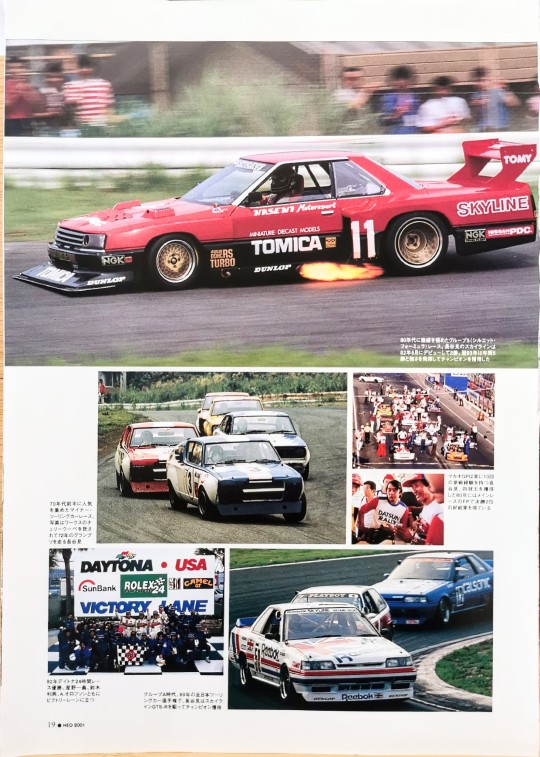
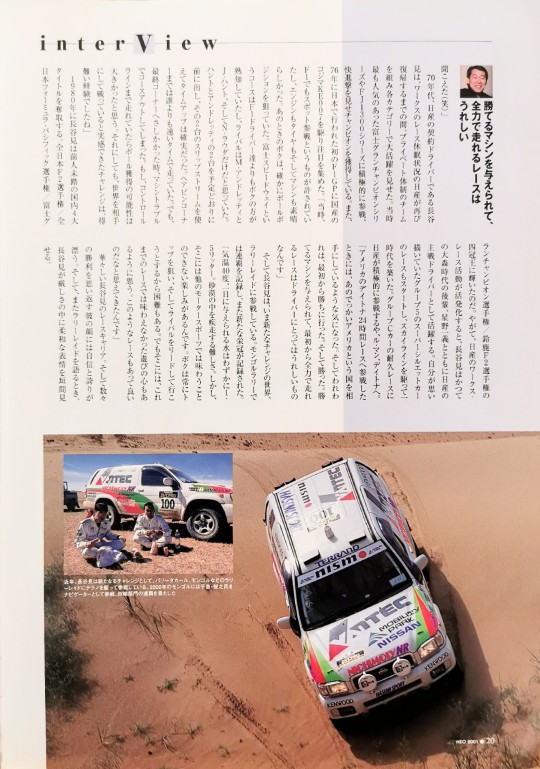
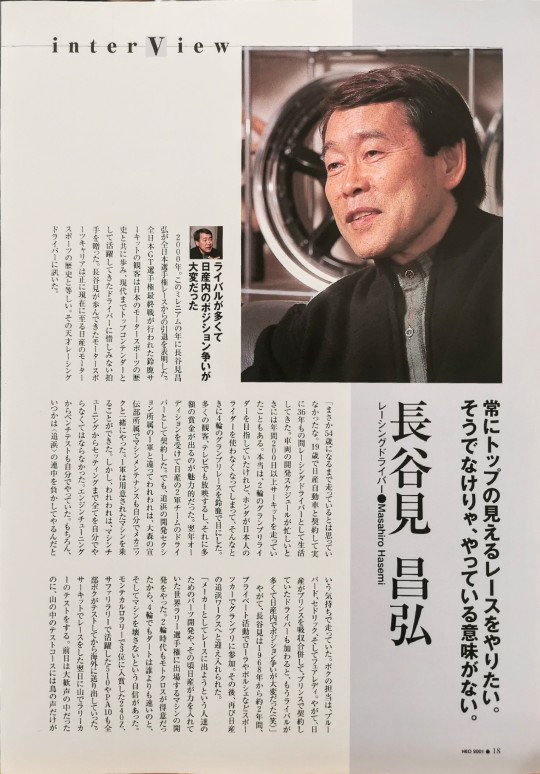
Interview with Masahiro Hasemi who retired from active racing in the JGTC in 2000.
interview
I always want to run a race where I can see who's at the top. Otherwise, there's no point in doing it.
Masahiro Hasemi
Racing driver ●Masahiro Hasemi
There are many competitors
Competition for positions within Nissan
Was tough.
the year of 2000. In this millennium, Masahiro Hasemi announced his retirement from All Japan Championship racing.
Suzuka, where the final round of the All Japan GT Championship was held
-Kit's audience is a history of Japanese motorsports
Walking with history and remaining a top contender to the present day
A generous round of applause to the driver who has played an active role in
I gave you my hand. Hasemi's history in motorsports
The motor sports carrier is exactly the same as Nissan's motor sports history up to the present day. that genius racing
I asked the driver.
“I never thought I would run until I was old.
There wasn't. At the age of 15, he signed a contract with Nissan Motor Co., Ltd.
He has been a racing driver for 35 years. When he had a busy vehicle development schedule, he was sometimes running on circuits over 200 days a year. I was actually aiming to become a two-wheel Grand Prix rider, but Honda stopped using Japanese riders, and that's when I saw a four-wheel Grand Prix race at Suzuka.
It was attractive because it had a large audience, was broadcast on TV, and offered a large amount of prize money. The following year, he auditioned and was contracted as a driver for Nissan's second team. However, unlike the first team in Oppama's development section, we belonged to Omori's advertising department and did machine maintenance ourselves along with the mechanics. The first army was able to ride the machines provided. However, we had to do everything ourselves, from machine tuning to settings. engine tuning
I also did bench tests myself. of course,
Someday I will defeat the guys from Oppama.
I was running with that feeling. I'm in charge of Blue Bird, Cedric, and Fairlady. Eventually, when Nissan merged with Prince and the drivers who had been under contract with Prince joined, there were already many competitors and competition for position within Nissan became very difficult (lol).
Eventually, for about two years starting in 1968, Hasemi participated in Grand Prix races in sports cars such as Lola and Porsche as a private activity. Afterwards, he was welcomed back to Nissan's Oppama Works.
``As a manufacturer, we developed parts for people who wanted to race, and we developed machines that would compete in the World Rally Championship, which Nissan was focusing on at the time.Even when we were two-wheelers, we were good at motocross, so we decided to move on to four-wheeled cars. But I was confident that I was faster than anyone else on dirt, and that I wouldn't damage the machine.The 240Z, which took third place in the Monte Carlo Rally, and the 510 and PA10, which were active in the Safari Rally, were all tested by me before they went overseas. The day after racing at the circuit, I raced a rally car in the mountains.
test. The day before, there was a lot of cheering.
However, the only sound on the test course in the mountains is the sound of birds.
I heard it (lol).”
``I'm happy when I'm given a machine that can win and I can race to the best of my ability.''
Hasemi, a contract driver for Nissan in the 1970s formed a private team and showed great success in each category until Nissan resumed its works race hiatus. He actively participated in the Fuji Grand Champion Series and the FJ1300 Series, which were the most popular at the time, and made steady progress and won the championship. He also attracted attention by driving the domestically produced Kojima KE007 in the first F1GP held in Japan in 1976. ``At that time, spot participation in F1 was allowed, and the engines, tires, and machines were all great.
It seemed like it. At that time, I was definitely playing ball.
I was aiming for Jishon. Fuji Speedway
The course is better for me than the F1 drivers.
I was familiar with him, and my rival was M. Andretti.
I thought it was just J. Hunt and N. Lauda. I was able to get Hunt and Andretti's cars in front on schedule, and I was able to use the slipstreams of those two cars to ensure I was able to improve my time. Until the hairpin corner, he was running faster than anyone else. However, as I approached the final corner, I ran off course due to machine trouble. If you can run to the control line, your chances of winning the ball are
I think it was big. Even so, the challenge that made me feel like I was competing against the world was a valuable experience.''
In 1980, Hasemi won an unprecedented four major domestic titles. All Japan F2 Championship All
Japan Formula Pacific Championship//Fujigu
Run Champion Championship/Suzuka F2 Championship
He won the four crowns. Eventually, as Nissan's works racing activities became more active, Hasemi became the main driver for Nissan along with his former Omori junior, Kazuyoshi Hoshino. The race for the Group 5 Super Silhouette car that I had envisioned started, and I drove the Skyline, marking the beginning of an era. Nissan began actively participating in endurance races for Group C cars, and began racing at Le Mans and Daytona. ``When we entered the 24 Hours of Daytona in the United States, it felt like we were competing against a huge nation called America.And we went out to win from the beginning, and we won.We had a machine that could win. It's a great feeling for a driver to race in a race where they can give their best from the start.''
Hasemi is now facing a new challenge in the world.
Participating in rally raids. In the Mongolia Rally, we recorded consecutive victories and another new crown. ``The temperature is 40 degrees Celsius, and we are given only 5 liters of water a day.It's difficult to race through the desert.However, there's a joy to it that you can't experience in other motorsports. It's difficult because you're always aiming for the top and trying to lead your rivals.But I think there's also a sense of fun to it that I haven't been able to experience in previous races.There are also races like this. I started to think that it was a good thing to do.”
Hasemi's spectacular racing career. There is confidence and pride in his face as he reflects on his many victories. And when Hasemi talks about rally raids again, he shows a gentle expression despite the severity.
#Masahiro Hasemi#Tomica Skyline#R30 Skyline#Nissan Cherry X1#Nissan Terrano#R31 Skyline#Reebok Skyline
12 notes
·
View notes
Text


Nissan Terrano driven by Masahiro Hasemi.
In recent years, Hasemi has taken on a new challenge by driving a Terrano in rally raids such as Paris-Dakar and Mongolia. In 2000, he participated in Mongolia with his son, Tomoyuki, as the navigator and achieved consecutive victories in the four-wheel division.
2 notes
·
View notes
Text

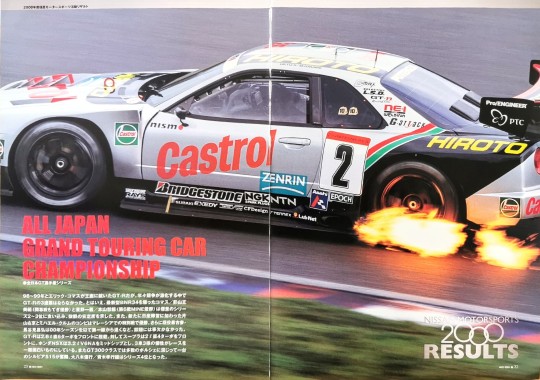
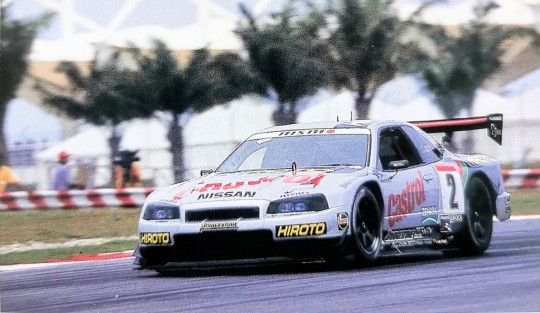
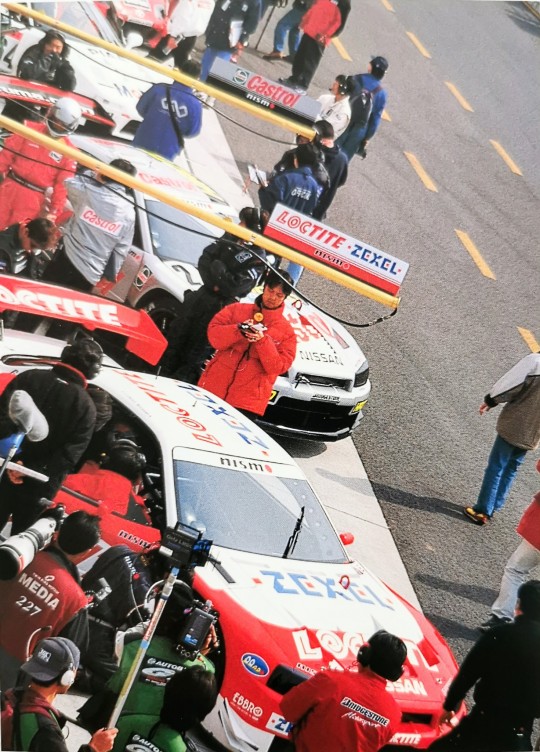
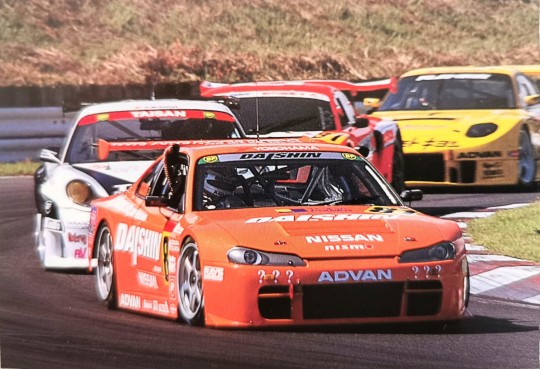
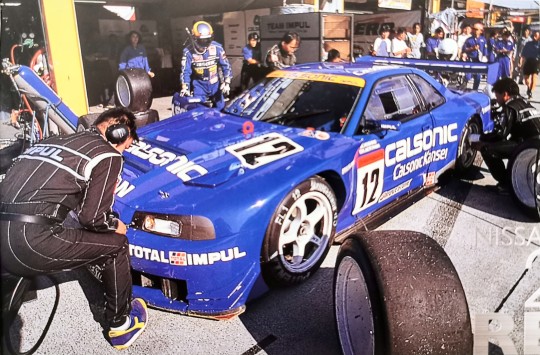
ALL JAPAN GRAND TOURING CAR
CHAMPIONSHIP
●All Japan GT Championship Series
Eric Comas took the GT-R championship from 1998 to 1999, but as the competition became more intense year by year, the GT-R was unable to win the championship three times in a row. However, Komas/Masami Kageyama (winner at the opening round at Motegi) and Kazuyoshi Hoshino/Tetsu Motoyama (winner at MINE at round 6), who drove the latest BNR34, managed to finish in 2nd and 3rd place in the series by a close margin, showing an outstanding performance. It showed stability. Additionally, the duo of Ukyo Katayama and Michael Krumm, who have recently joined the Nissan team, won a special race in Malaysia, and the oldest active driver, Masahiro Hasemi, retired from the front line after the 2000 season, so there is no shortage of topics to talk about. There wasn't. The GT-R has a 2.6-liter straight-six turbo in the front, whereas the Supra has a 2-liter straight-four turbo in the front, and the Honda NSX has a 3.2-liter V6NA in the midship, and the individuality of the three cars makes the race even more interesting. Also, in the GT300 class, there was one car among many Porsches.
The Silvia S15 fought hard, and Nobuyuki Oyagi/Takayuki Aoki finished 4th in the series.
21 notes
·
View notes
Text

Group 5 (Silhouette・Formula) Race. Hasemi's Skyline debuted in May 1982 and won two races. The following year, 1983, he showed his strength with 5 wins and won the championship.
19 notes
·
View notes
Text

Nissan Cherry X1 racecars. Masahiro Hasemi and Kazuyoshi Hoshino both raced these early in their careers.
4 notes
·
View notes
Text

Group A era. 1989 All Japan Touring Car Championship
Hasemi won the championship driving the Reebok Skyline GTS-R. At rear of pic is Kazuyoshi Hoshino in the Impul Calsonic R31 GTS-R. I think the car in middle is an EF3 Honda Civic.
#R31 Skyline#R31 GTS-R#Reebok R31#Calsonic R31#Grp A R31#Grp A R31 GTS-R#Calsonic R31 Skyline#Calsonic Skyline#Reebok Skyline
17 notes
·
View notes
Text

20th century
NISSAN
MOTORSPORTS 1958-2000
'80~
WEC championship,
And to participate in Le Mans
Group C flourishes.
In the early 1980s, the FIA (International Automobile Federation)
The rules and classification of competition vehicles were changed.
Group C vehicles that are racing sports cars
is not classified by displacement as in the past,
Only the total amount of fuel used is specified (good fuel consumption is essential);
What type of engine can you use if you clear this?
It is a challenge for manufacturers as they are willing to participate.
It has become a very important category. The same regulations apply from the following year.
The world championship match “WEC Japan” by Fujis
Since it started at Pedeway, Nissan also started
Developed a carbon engine and mounted it on a foreign chassis.
Start participating. As an extension of that, to the Le Mans 24 Hours.
Participated in the race, the first challenge was in 1986, and the best in 1990.
Although it became a fast machine and won pole position, unfortunately, the battle ends without victory. In the 80s-90s
Also in WSPC (World Sports Prototype Championship) he participated full-time and finished 3rd in the series in 1990.
At that time in the United States, a category similar to Group C, IMSA-GTP, which is a popular cars actively participate in the race, Nissan GTP ZX-T
He was the champion from 1988 to 1999.
Nissan has been in the WRC (World Rally Championship) for 7-8 years.
Although he was able to take second place in the series for three consecutive years, the new vehicle In the era of Group B (starting in 1983) and Group A (starting in 1988) after the regulations came into effect, they often played supporting roles. However, there are still marathon raids such as the Paris-Dakar Rally, and popularity in the United States.
At stadiums, off-road races, etc. that collect
Often achieved good results.
In Japan, in 1985, Group A vehicles began
The Japan Touring Car Championship has begun, and Skyline RS Turbo and GTS-R were part of the winning front. And boasts the strongest Group A machine
R32 Skyline GT-R appears.
On the other hand, the Saurus Cup, March one-make race, or an amateur with many Silvias and Pulsars.
Races for beginners were also widely held nationwide.
Also, the first F1GP race in Japan in 10 years will be held in 8 years.
It was held at Suzuka Circuit and has been held every year since then.
With the introduction of F1, there was a sudden F1 boom in Japan.
/The motorsports boom was ignited.
PIC CAPTIONS
Local Kenyan expert Shehkar Mehta and his beloved PA10 Violet achieved the feat of winning the Safari Rally four years in a row from 1979 to 1982. Among the many international rallies, the Safari Rally is far more demanding than the events held in Western Europe, and it became an ideal venue for Japanese cars to demonstrate their excellence.
_____________________________________________
The "Silhouette Formula" car, which was born in Germany in the late 1970s, is a heavily modified racing car that retains only a slight silhouette of the production car. It is equipped with a trendy turbocharger and captivates fans with its overwhelming straight-line speed. In Japan in the early 1980s, Skylines and Silvias spewed flames and raced around Fuji Speedway and other places. Its power is 570bhp
_____________________________________________
Group C competition, 1985 WEC Japan. More than 80,000 spectators packed into Fuji Speedway in heavy rain. The works Porsche 956 on the first row of the grid withdrew early, and Kazuyoshi Hoshino, driving the March B5G Nissan (No. 28) that qualified third, won the race, which was shortened to two hours due to bad weather. Although bad weather was on their side, it was the first time for a Nissan car and the first Japanese to win a world championship race.
5 notes
·
View notes
Text
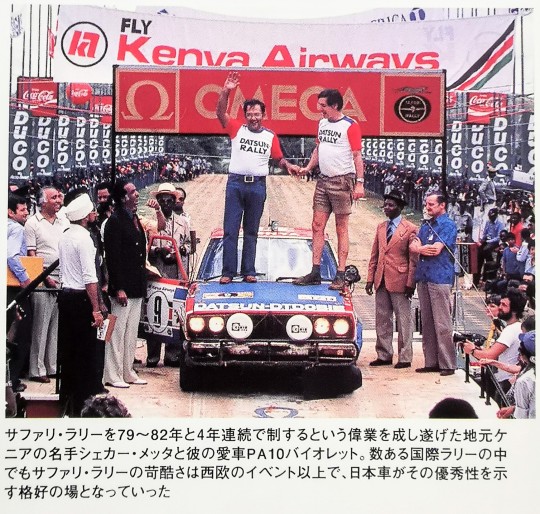
Local Kenyan expert Shehkar Mehta and his beloved PA10 Violet achieved the feat of winning the Safari Rally four years in a row from 1979 to 1982. Among the many international rallies, the Safari Rally is far more demanding than the events held in Western Europe, and it became an ideal venue for Japanese cars to demonstrate their excellence.
1 note
·
View note
Text

The "Silhouette Formula" car, which was born in Germany in the late 1970s, is a heavily modified racing car that retains only a slight silhouette of the production car. It is equipped with a trendy turbocharger and captivates fans with its overwhelming straight-line speed. In Japan in the early 1980s, Skylines and Silvias spewed flames and raced around Fuji Speedway and other places. Its power is 570bhp
8 notes
·
View notes
Text

Group C competition, 1985 WEC Japan. More than 80,000 spectators packed into Fuji Speedway in heavy rain. The works Porsche 956 on the first row of the grid withdrew early, and Kazuyoshi Hoshino, driving the March B5G Nissan (No. 28) that qualified third, won the race, which was shortened to two hours due to bad weather. Although bad weather was on their side, it was the first time for a Nissan car and the first Japanese to win a world championship race.
2 notes
·
View notes
Text

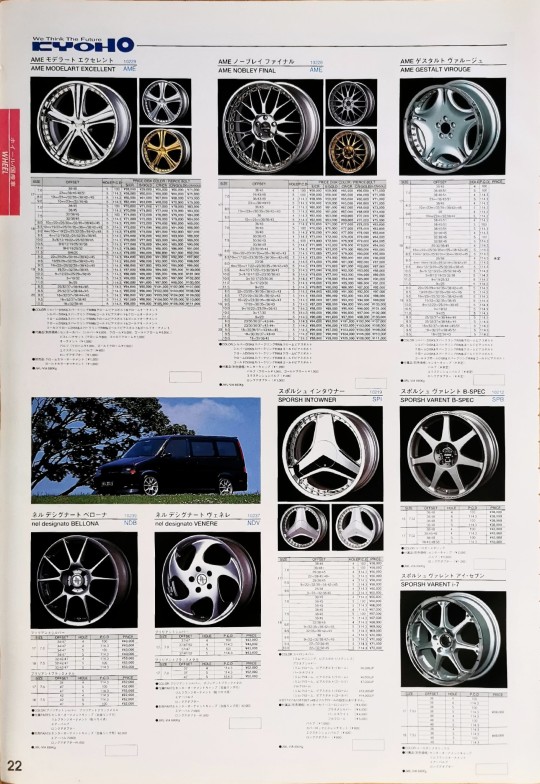



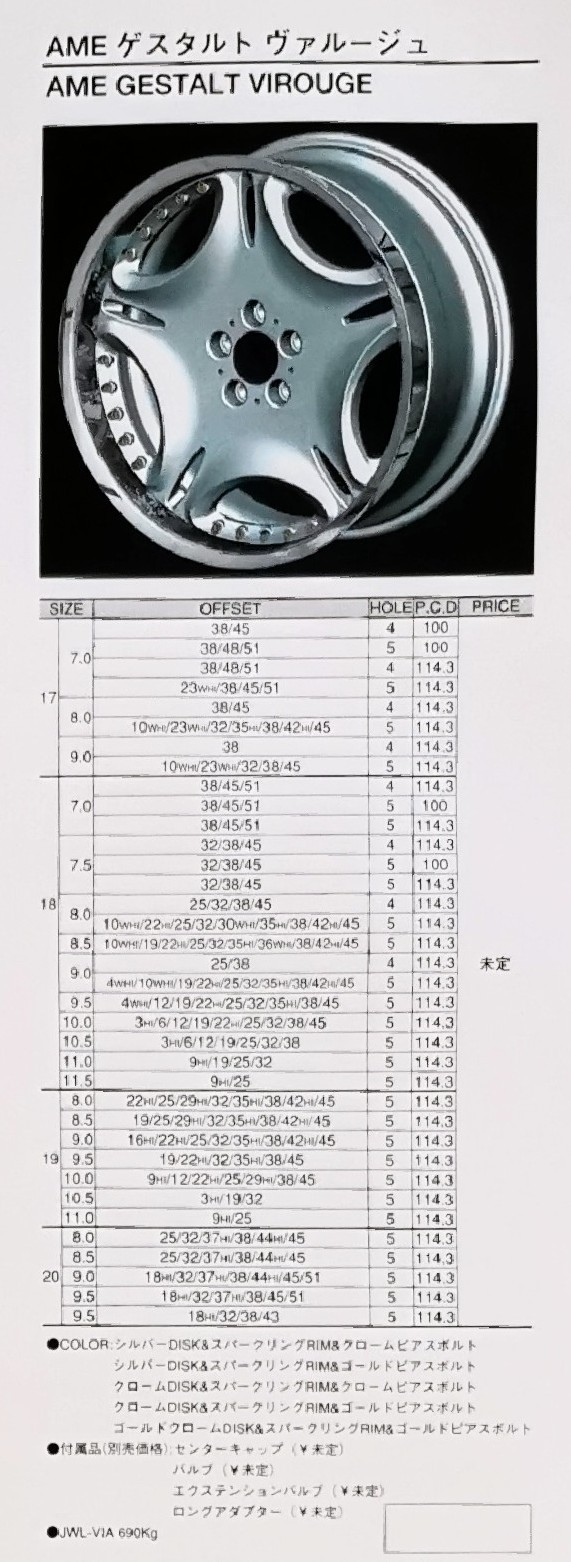

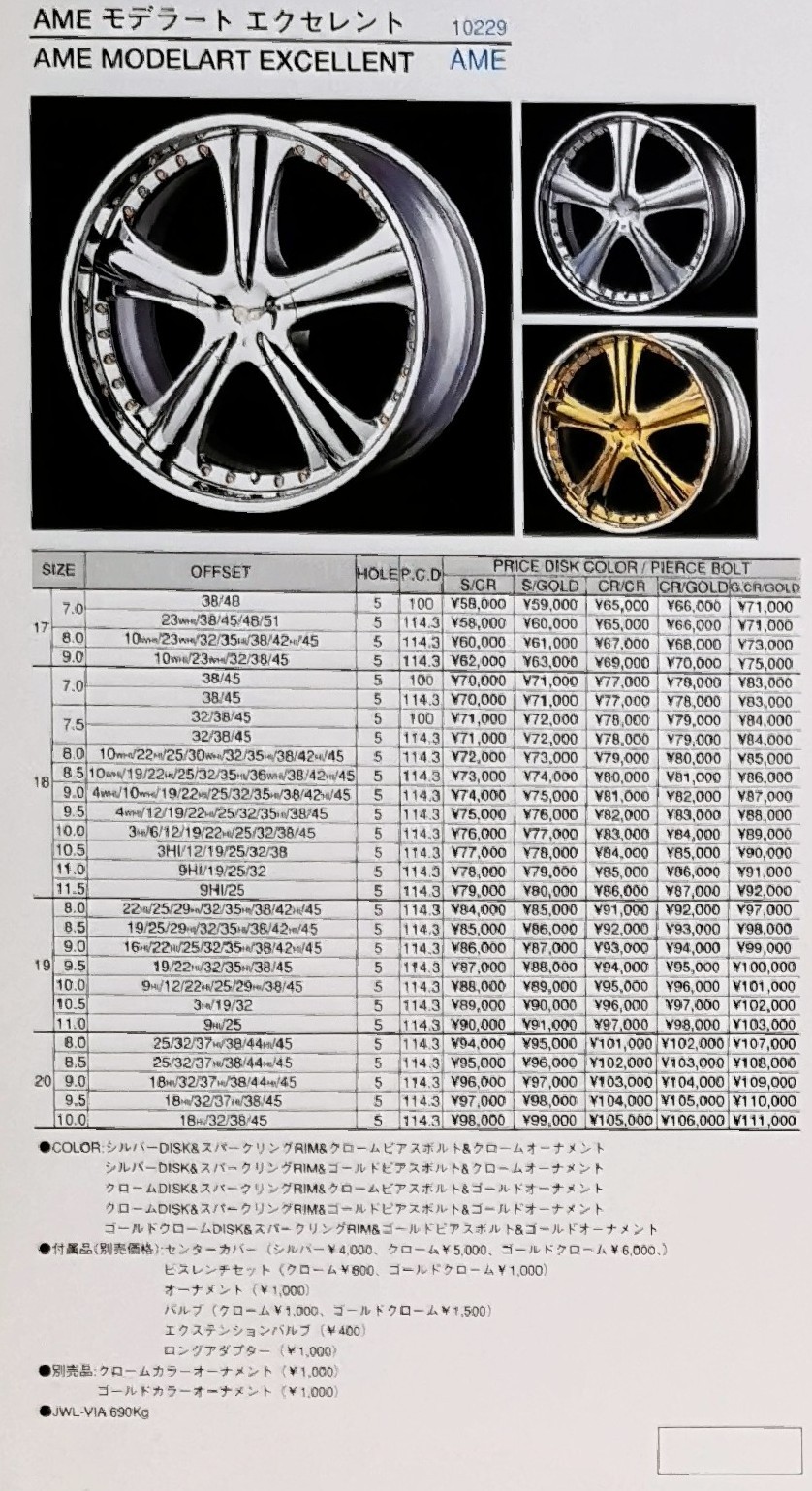
Some of the wheel range of Kyoho Corporation that aren't badged as Enkei. Algernon Intellesse II, AME Nobley Final, AME Gestalt Virouge, AME Modelart Excellent, Nel Designato Bellona and Venere, and Sporsh Intowner, Sporsh Varent i-7 and Sporsh Varent B-spec.
#Kyoho Corporation#Kyoho wheels#Sporsh Intowner#Algernon Intellesse#Algernon Intellesse II#Sporsh Varent#AME modelart#AME Modelart Excellent#AME Gestalt Virouge#Gestalt Virouge
5 notes
·
View notes
Text
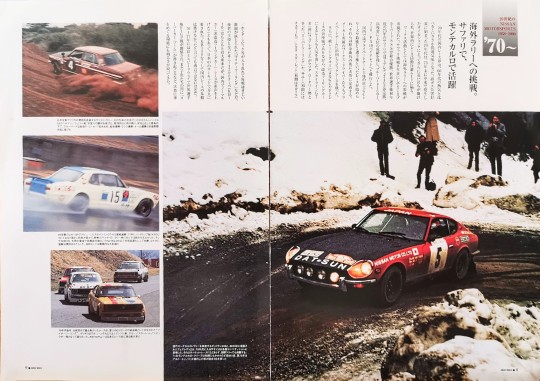
20th century
NISSAN MOTORSPORTS
1958-2000
70~
Taking on the challenge of overseas rallies.
On a safari
Active in Monte Carlo
The domestic racing world of the 170s was compared to the excitement of the 1960s.
The market has become somewhat sluggish. This was further exacerbated by the oil crisis caused by exhaust gas pollution, and the world fell into a mood of refraining from racing activities.
The 1970s began with a strategic plan, but it started in the Middle East at the end of 1973.
Participation in overseas rallies was emphasized as a works activity. 510 Bluebird SSS won the overall victory in the 8th year of the safari challenge. The Fairlady 240Z won the safari in the first year of the World Championship, and has consistently maintained top results ever since, moving on to the Bluebird 160J and 710/PA10 Violet.
In Japan, the Fuji GC system, which is dominated by private teams,
Races such as Leeds and Suzuka F2 Championship started.
After many twists and turns, they gradually become established.
Works drivers belonging to the manufacturer also
He was transferred to an event team and competed in big races.
Furthermore, GC and F2 races using pure racing cars are also available.
Although it was an undercard race for the race, the race for modified touring cars also gained popularity. Skyline GT-R (later Fairlady Z) competes with Mazda rotary cars
The "Super Touring" that I made, and the Sunny (in the early days Cherry too)/Toyota Starlet (initial Corolla)
Every race is amazing with Honda, Civic, etc.
``Minor Touring'' was a fierce battle. The Sunny 1200 Coupe (KB110), which became the main character of the latter, was originally a popular car, but with the birth of normal car (unmodified touring car) racing in Japan, it became popular with everyone at circuits throughout Japan. Loved. It is no exaggeration to say that without the KB110, the foundation for domestic racing could not have been built.
World racer at Fuji Speedway from 1970 to 1977
The F1GP match was held, and there was also a sense of excitement among the children.
``Car boom'' began, and cars gradually became popular.
Brightness has returned to the environment surrounding the world.
PIC CAPTIONS
A Datsun 240Z races through the snowy Monte Carlo Rally. Announced in the fall of 1969
The Fairlady Z appeared in various competitions as soon as the 1970s began. It is active not only in circuit races but also in international rallies. At the 1971 Monte Carlo Rally, it placed 5th overall despite being the first to race, and the following year, in 1972, this car of Aaltonen/Todt took 3rd place overall.
_____________________________________________
The 510 Bluebird SSS (Hermann/Schuller) achieved an impressive victory in the 17th year of the Safari Rally, which is run over the rough roads of vast East Africa. Despite the poor conditions of rain on the first day of the competition, which turned into a quagmire, Bluebird finished in 1st, 2nd, 4th, and 7th place overall, achieving complete domination with overall victory, class victory, and team victory.
_____________________________________________
The Skyline GT-R, which debuted at the JAF-GP in the spring of 1969, went on to win consecutive races, and in 1971, when the hardtop version (KPGC10) was introduced, its strength increased, giving no chance to the new Mazda Rotary team. Then, in March 1972, at Fuji in heavy rain, this No. 15, driven by Kunimitsu Takahashi, lapped the 2nd place and below and won an easy victory, giving the GT-R its 50th victory in total. This was an amazing record at the time.
_____________________________________________
In the late 1970s, the hottest race in Japan was the "Minor Touring" race held as the undercard of the Fuji GC Series. 1.3'' engine cars tuned to the limit, Sunny, Starlet, and Civic all competed together. KB110 Sunny is a masterpiece car that will remain in Japanese racing history.
5 notes
·
View notes
Text

A Datsun 240Z races through the snowy Monte Carlo Rally. Announced in the fall of 1969
The Fairlady Z appeared in various competitions as soon as the 1970s began. It is active not only in circuit races but also in international rallies. At the 1971 Monte Carlo Rally, it placed 5th overall despite being the first to race, and the following year, in 1972, this car of Aaltonen/Todt took 3rd place overall.
15 notes
·
View notes
Text

The Skyline GT-R, which debuted at the JAF-GP in the spring of 1969, went on to win consecutive races, and in 1971, when the hardtop version (KPGC10) was introduced, its strength increased, giving no chance to the new Mazda Rotary team. Then, in March 1972, at Fuji in heavy rain, this No. 15, driven by Kunimitsu Takahashi, lapped the 2nd place and below and won an easy victory, giving the GT-R its 50th victory in total. This was an amazing record at the time.
7 notes
·
View notes
Text

In the late 1970s, the hottest race in Japan was the "Minor Touring" race held as the undercard of the Fuji GC Series. 1.3'' engine cars tuned to the limit, Sunny, Starlet, and Civic all competed together. KB110 Sunny is a masterpiece car that will remain in Japanese racing history.
3 notes
·
View notes
Text

Not happy with the translation of this page but think i have it maybe 80 to 90% correct.
20th century NISSAN MOTORSPORTS
1958-2000
'60~
The infancy of domestic racing.
R381 and R382 win consecutive Japanese Grand Prix victories
The dawn of full-fledged motorsports in Japan
The origin of the visit dates back to the late 1950s, when a two-wheeled Asama Volcano race was held. As the 1960s entered, domestic motorcycle manufacturers began to win on the world GP stage, and Japanese industry became a reality on the world stage.
I proved it. The Suzuka Circuit was completed in the fall of 1962, and Japan's first full-scale automobile race, the 1st Japan Grand Prix, was held the following year in May 1963. Each automobile manufacturer, taking note of its promotional effects, soon formed a works team. Nissan selected powerful riders one after another, such as Kenjiro Tanaka, Kunimitsu Takahashi, Gen Kitano, Motoharu Kurosawa, Masahiro Hasemi, Kenji Tohira, Seiichi Suzuki, and Kazuyoshi Hoshino, and many of them went on to become main players in the domestic four-wheel racing world. It will reign for a long time.
Funabashi Circuit in 1965 and Fuji Speedway opens in 1966. Kanto and all over Japan
The racing fever is increasing. Just in time for Tokyo Motor Show.
The automobile industry was in a period of high growth before and after the pick-up.
It was a time when it made great strides as Japan's core industry.
Then, in 1966, Nissan and Prince merged, and Japan's first racing sports car “Prince R380”
will further evolve under Nissan.
In 1968, a large displacement engine with a unique huge wing was introduced.
The R381, with its powerful engine, and the R382 the following year defeated strong rivals to win the Japanese Grand Prix. And formula car races are held in Japan.
Fairlady/Skyline/Bluebird GT cars and Touring cars.
Many car races, as well as endurance races that included these races, were held.
Nissan also actively participated in overseas rallies.
At a time when the World Rally Championship did not yet exist,
Monte Carlo and Safari became the main battlegrounds.
The 1960s was the infancy of domestic racing.
It was a time of rapid evolution and growth. However, the issue of automobile exhaust gas became apparent in the 70s.
In early summer of 1969(?) , Nissan announced that it would be absent from the Japanese GP, and at that moment,
Domestic motor sports had only been growing until then.
The world was forced to seek a new direction.
2 notes
·
View notes